Modern ammunition can make a vintage shotgun into an effective gobbler getter
There’s a warmth in an old shotgun, with its wood worn smooth and its glossy finish dulled by calloused hands over countless hours afield. The once deep blue is now just a hint of color on nearly bare metal. If these guns could talk, they would tell stories that would keep us at rapt attention for hours on end. Maybe they do. Reach into the back of your safe, past all the fancy new shotguns with their red dots and turkey chokes. Grab that old gun, hopefully one that was used by your dad, or your dad’s dad. Now hold it and listen. I bet you hear a story in your mind of a hunt from long ago.
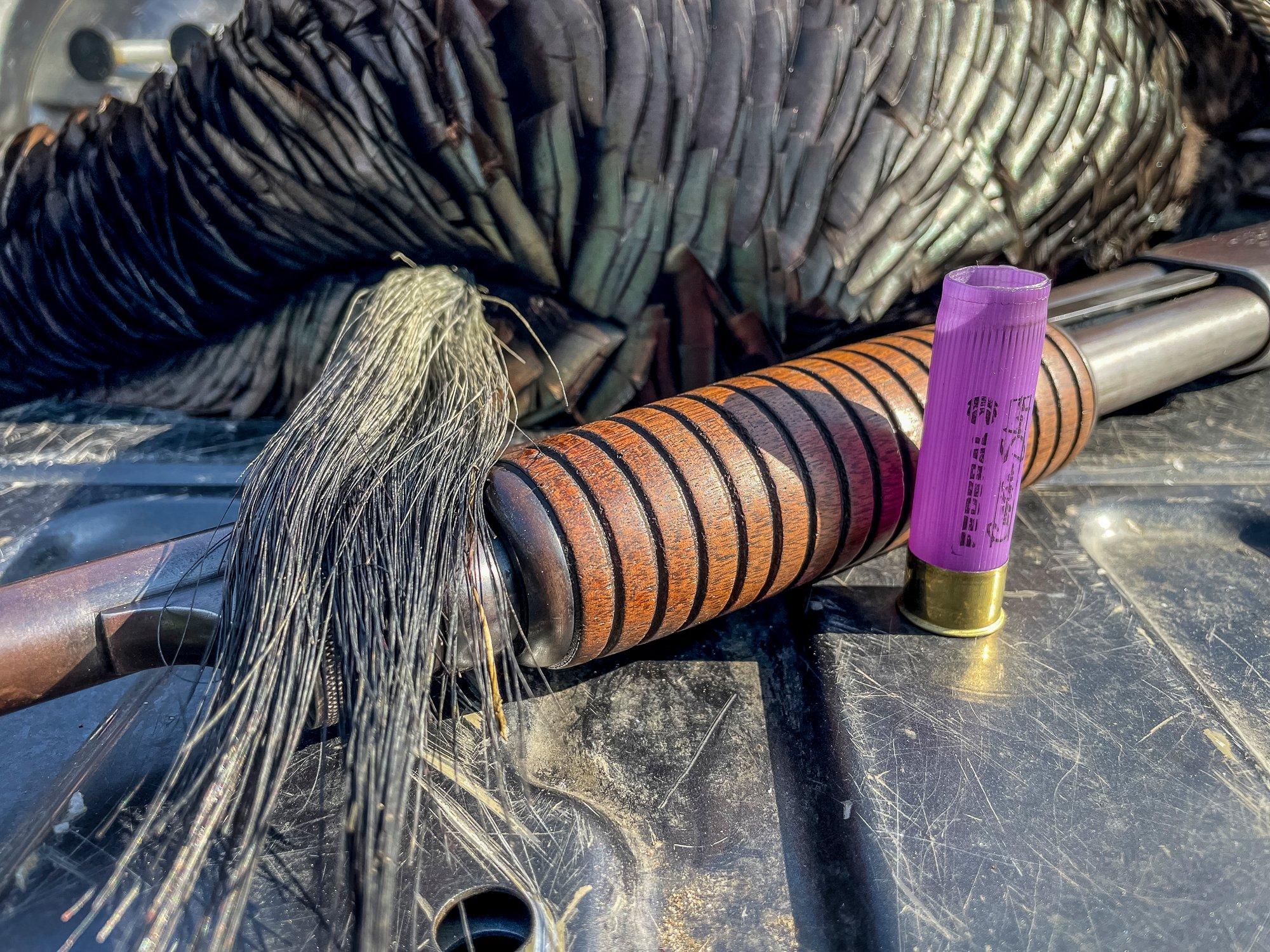
Old family guns hold a special place in the hearts of many hunters. Image by Michael Pendley
Advances in turkey hunting gear have accelerated in the past 30 or so years. We have modern guns with ultra-tight chokes and precision optics, space-age ammo, and calls that a beginner can pick up and be making passible yelps in just a few minutes. Camo is so good that the hunter disappears from even the sharp eyes of a wild turkey, and decoys are so realistic that you have to look twice to make sure it isn’t a live bird standing in front of you. Add it all up and turkey hunting might be easier now than it has ever been.
Your grandfather, or at least the old-timers of his generation who were lucky enough to live where wild turkeys thrived, didn’t need all of that to kill a turkey. They used the same shotgun they used for rabbits or quail, with probably the same ammo. They went to where the turkeys wanted to be, sat still, maybe clucked a bit on a slate call or with their mouth, and waited until the turkey was in range before pulling the trigger.
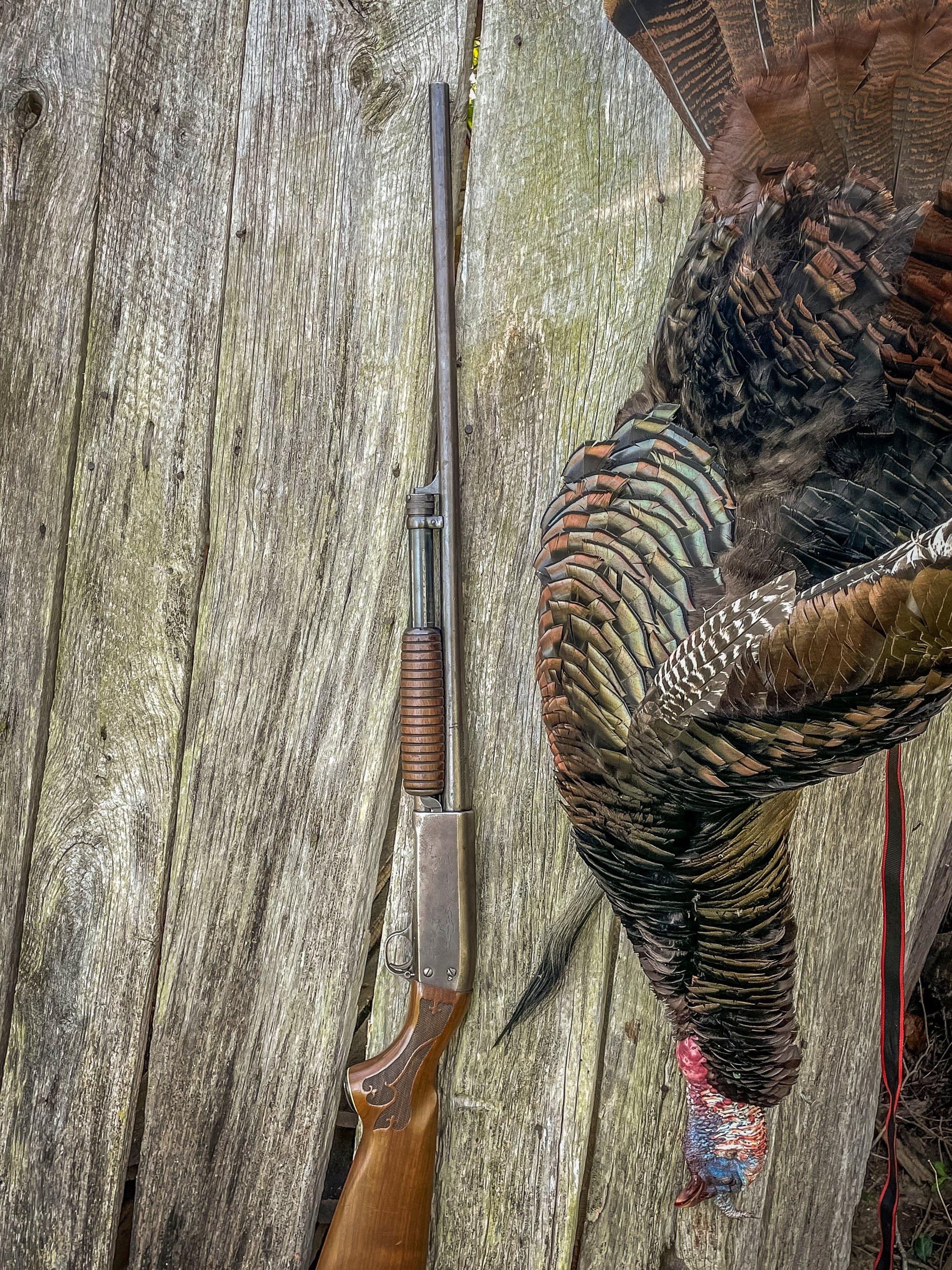
While lacking the extra tight patterns of modern turkey guns, older guns can still be effective with the right ammo. Image by Michael Pendley
This year, Potroast, my youngest son, and I are leaving our dedicated turkey guns at home and carrying a pair of old family guns afield. I’ll be packing my grandfather’s Ithaca 37 in 16 gauge. He’ll be using his grandfather’s, my dad’s, Browning Sweet 16. Both guns have a 2 ¾ inch chamber and, like a lot of older shotguns, both have fixed chokes of modified and improved cylinder, respectively. What does that mean? It means we’ll be getting turkeys in close before we pull the trigger, the way turkey hunting was meant to be.
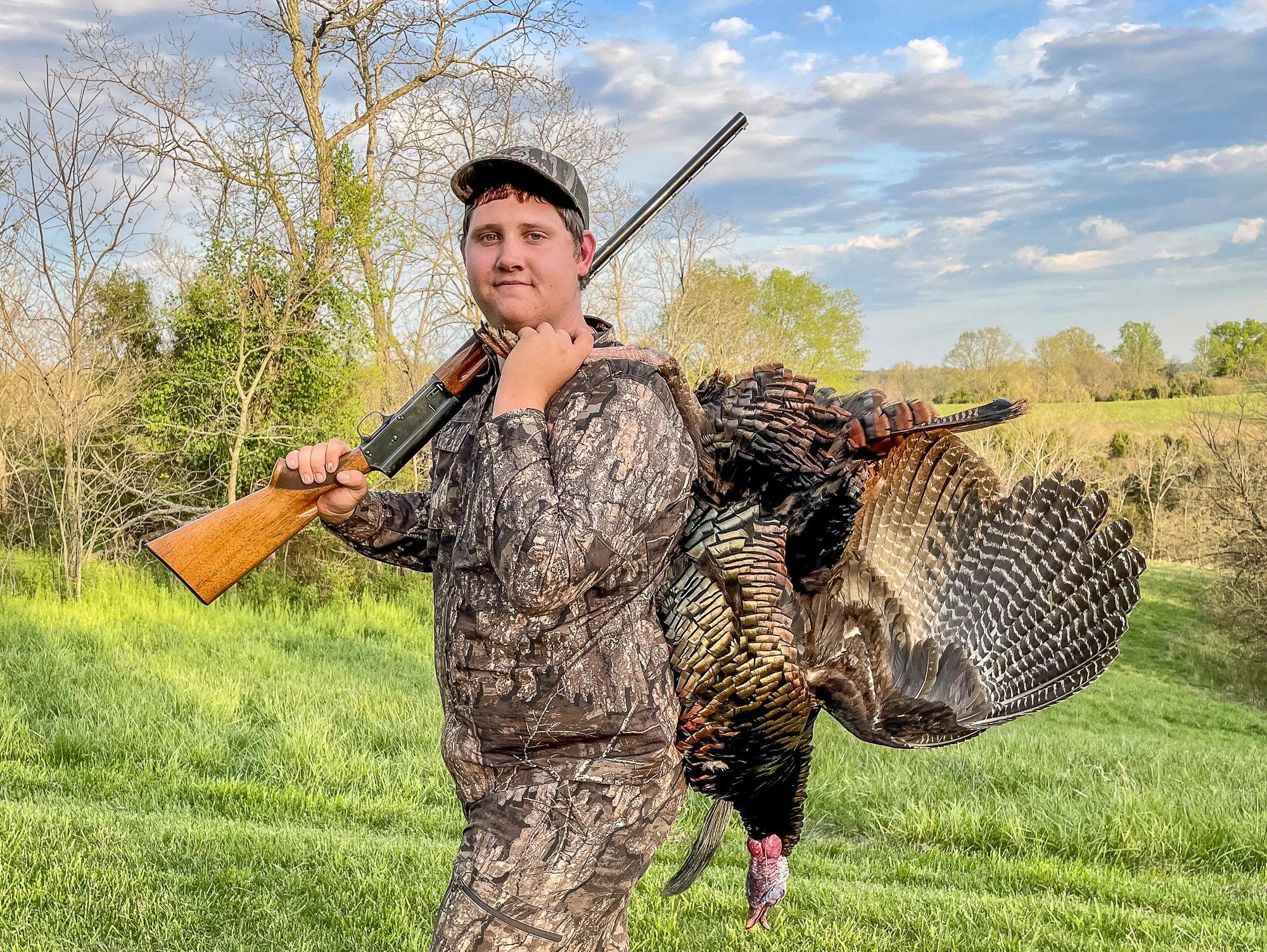
The author’s son Potroast with a fine Kentucky longboard taken with his grandfather’s Browning Sweet 16. Image by Michael Pendley
If the idea of using an old shotgun for turkeys this spring sounds fun, here are a few tips to get the most out of them.
Safety First
If you are using an old shotgun that hasn’t been fired in a while, give it a good going over before you load it up with modern ammo. Make sure everything is in working order and no parts are broken or missing. Check the barrel for deep pitting or bulging. It’s a good idea to check your chamber length, too. Most older guns were limited to 2 ¾ inch ammo, and some really old 16 gauges are a bit tight for even that. If you have any questions at all, have it checked out by a competent gunsmith.
Use Modern Ammo
Just because we’re using old guns doesn’t mean we won’t take advantage of modern ammo. Today’s shotgun loads combine of all the latest technology. With plastic wads and buffers designed to hold shot together in a tight pattern, faster burning powders, and even advancements in hull materials and design, today’s ammo is light years ahead of what was available when these old guns were new.
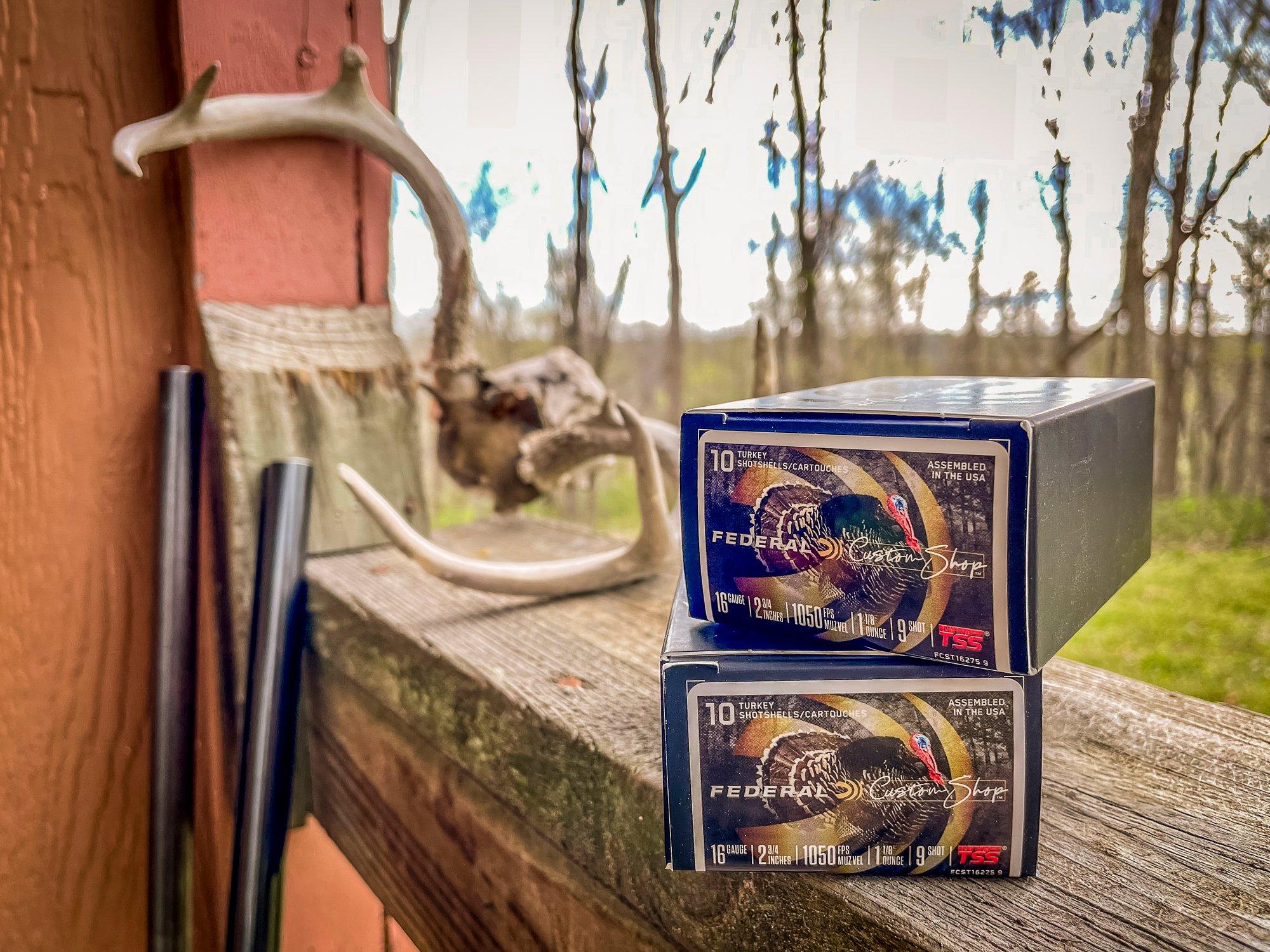
Modern ammo advances like the TSS shot in these custom loads from Federal Ammo will increase even an antique shotgun’s effective range. Image by Michael Pendley
One of the most striking advances is in the shot itself. Rounder, more-uniform pellets, harder lead and copper plating, and, most of all, heavier-than-lead materials like tungsten mean you can pack more shot into a tighter pattern, even with more-open chokes.
To get the most out of our 2 ¾ 16 gauge loads, we went with TSS shotshells. Since TSS has a density of 18 grams per cubic centimeter, more than 38 percent heavier than lead, a turkey hunter can get by with much smaller shot while still maintaining the same amount of downrange energy. In our 16-gauge loads from the Federal Custom Shop, we get a payload of 1 ⅛ ounces of #9 TSS containing a whopping 408 pellets. Even with a wide pattern, that equals out to a bunch of lethal shot in a target the size of a turkey head and neck. Apex Ammunition also makes a wide variety of TSS turkey ammo for just about any shotgun.
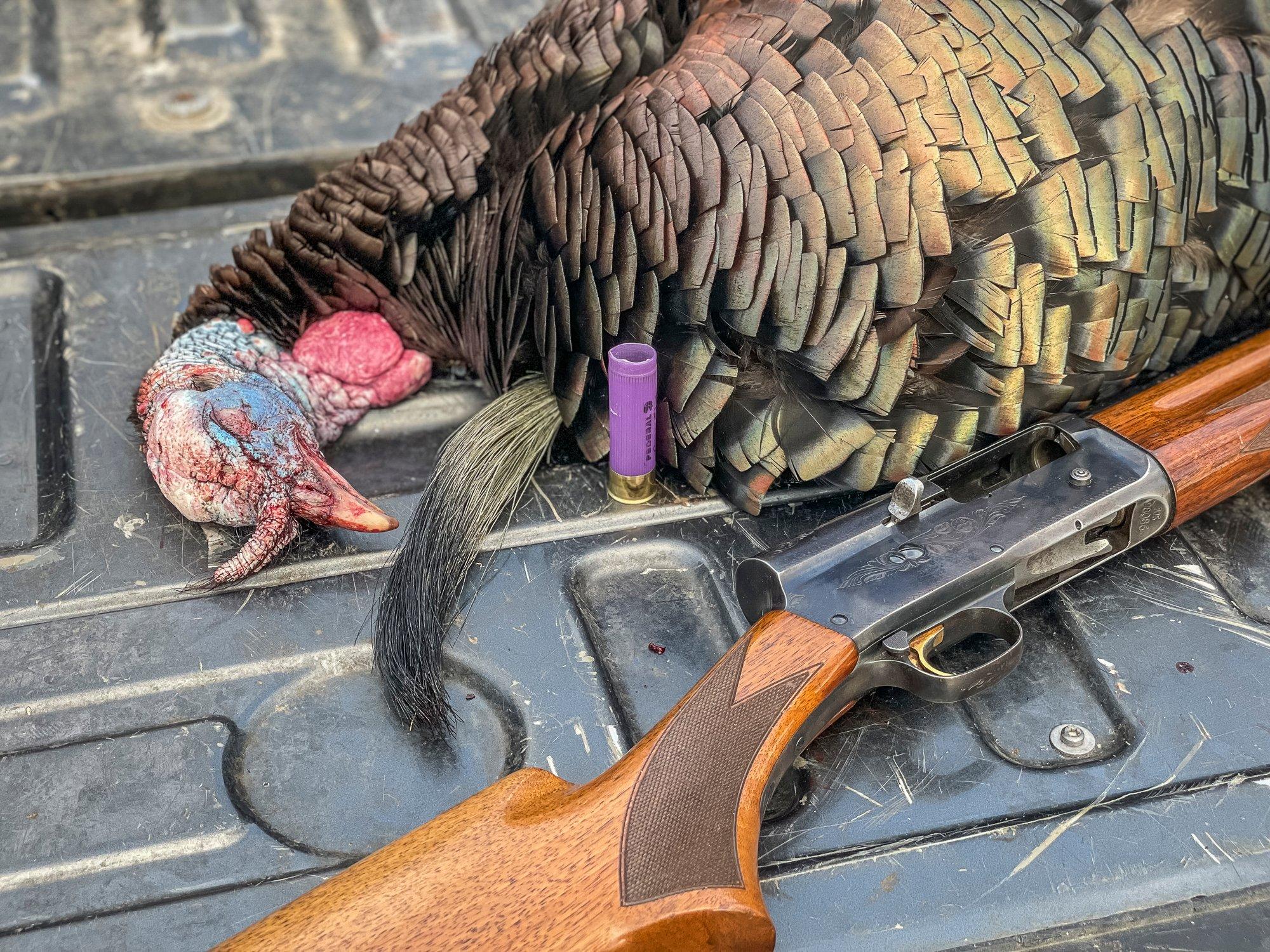
Check various loads in your shotgun to see which brand and shot size produces the best pattern. Image by Michael Pendley
Even if you don’t go with TSS shot, modern ammo manufacturers offer several options in No. 4, 5, and 6 lead shot. Take a look at offerings from Federal Grand Slam, Remington Nitro, or Winchester Long Beard XR for tight patterning turkey loads.
Head to the Range
Even with ammo advancements, these old guns are a far cry from today’s extra-full choked turkey slayers. Maximum ethical range might only be 20-30 yards. How will you know? Pack up some turkey targets and head to the range.
Start at 20 yards and work out from there. Once you get down to to a consistent 15-20 pellets in the head and neck, you’ve reached your maximum range with that setup. Sometimes trying different brands or shot sizes of ammo can change the pattern. If you aren’t happy with your range, do some experimenting.
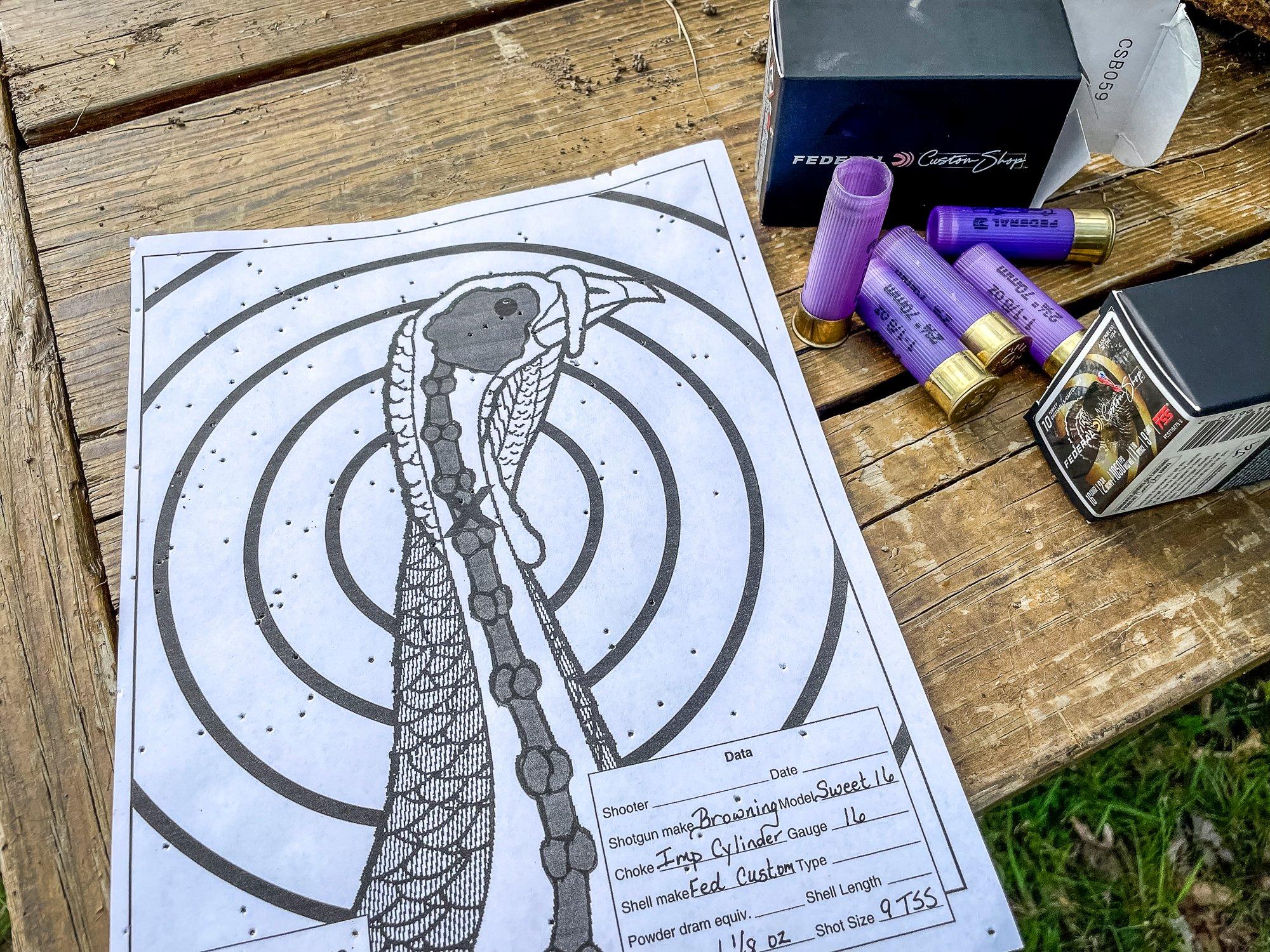
Head to the range and check your gun at various ranges to find your gun’s maximum effective range. Image by Michael Pendley
Since most of these old guns come with only a front bead as a sight system, you are pretty much stuck with making on target adjustments. If your gun consistently hits high, low, left, or right of your aiming point, figure it out on the range so you will know exactly where to hold when that longbeard strolls in.
Be Patient
A shotgun that will effectively reach out to 50 or 60 yards can cover up for a lot of mistakes in the turkey woods. How many times has that old gobbler hung up at 40 yards or a bit farther and refused to take another step? With a tightly bored magnum load, a hunter simply has to take aim and squeeze the trigger. With one of these older shotguns, you have to be patient. If your gobbler hangs up, try giving him the silent treatment. Thinking the hen he was courting has walked away, a curious tom will often break strut and come to investigate. Or he might not. And that’s okay in my book. The challenge of completely fooling a mature tom is one of the reasons I’m using the old Ithaca this season.
Other tips for drawing a gobbler in close, in states where they are legal, are tactics like blinds and decoys. Toms will often come on a run to a jake and hen decoy, particularly in the early season.
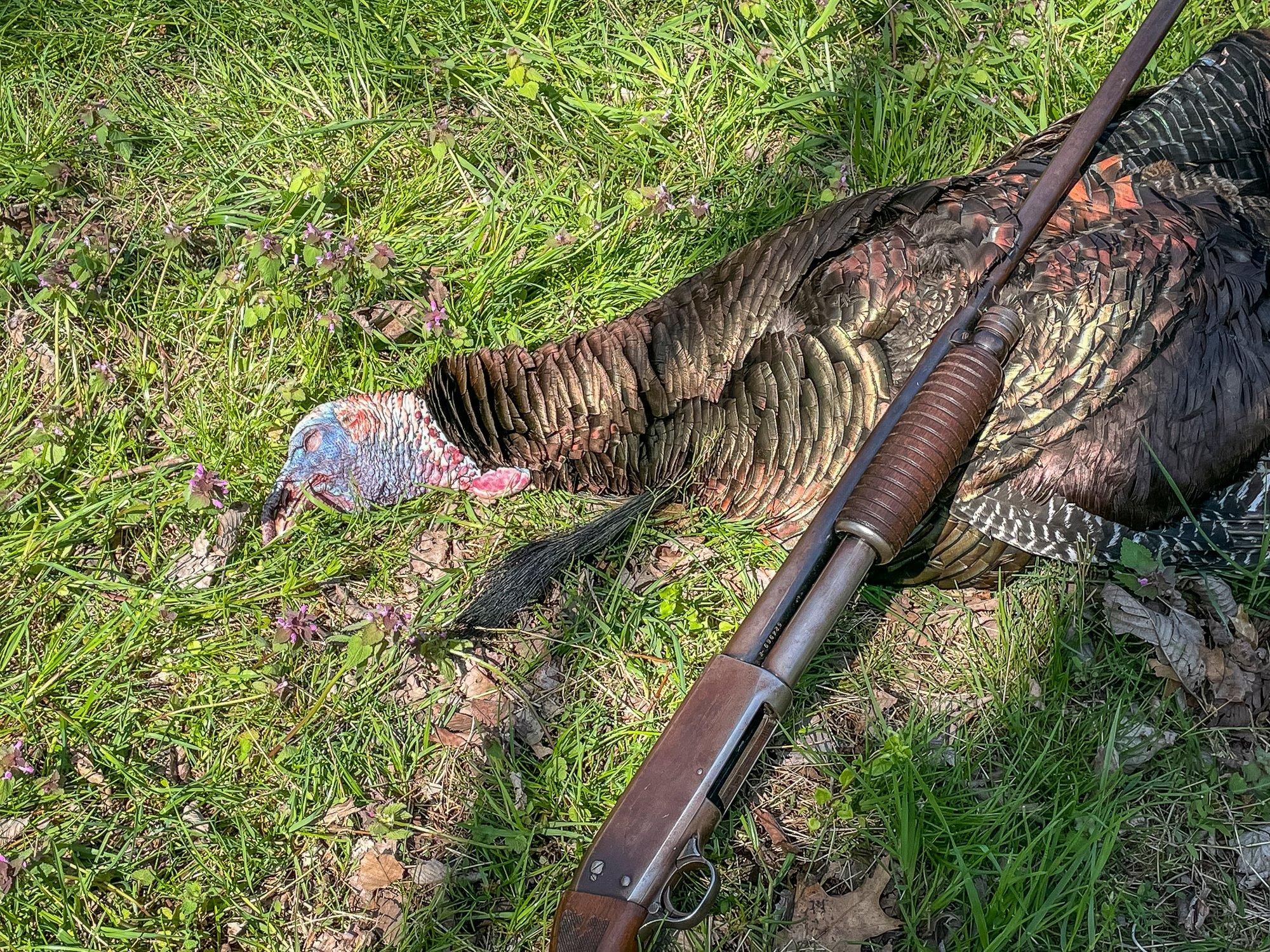
Be patient and allow the turkey to get into your comfortable range. Image by Michael Pendley
Have Fun
There’s more to turkey hunting than killing a turkey. When you bring one all the way in to close range, you won. When you can’t, he did. It just means he’ll be there to hunt again later in the season. To the best of my knowledge, my grandfather never got to enjoy the rush that comes when a longbeard fires off just feet away, so close you can feel the rumble of his spit and drum deep in your chest. There just weren’t any turkeys in his part of the country back then. But I bet he would have enjoyed it. And I bet he’d be happy to know I’m still using that old Ithaca.
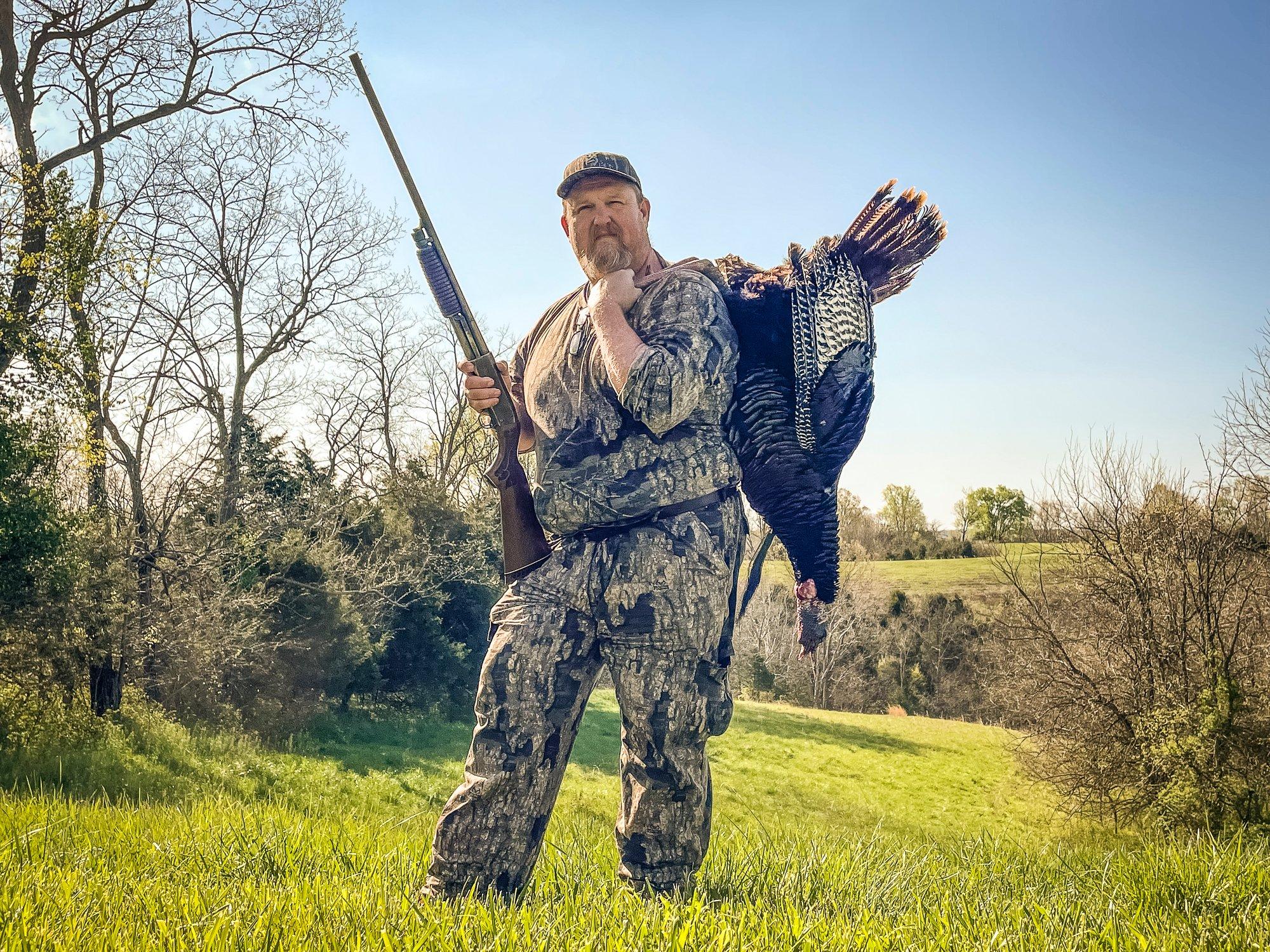
The best part of hunting with an heirloom shotgun is the satisfaction and fun you get from using the same firearm your ancestors might have used generations ago. Image by Michael Pendley










